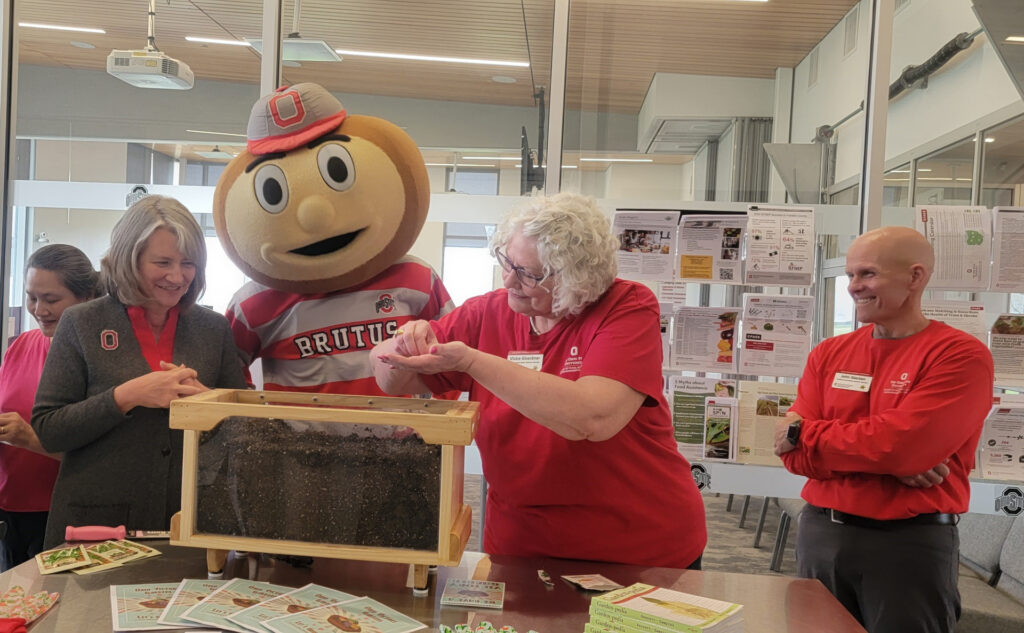Food insecurity is a problem exacerbated by conflict. Crisis puts strain on the systems that feed people, often leaving many without enough to eat. During World War I, President Woodrow Wilson launched the Victory Gardens Program, which asked Americans to grow their own food to help the war effort.
The program was popular and was used again during World War II, and Pam Bennett said it recently resurfaced in Ohio during the COVID-19 pandemic.
“Gardening just boomed,” said Bennett, a horticulture educator with Ohio State University’s Clark County Extension. “People wanted to know how to grow vegetables. We were getting calls for help with how to do it, where to get seeds, etc.”
Following the promotion of pandemic victory gardens in Kentucky, OSU Extension and the Ohio Farm Bureau launched the Ohio Victory Garden program in eight counties in 2020. In four years, outreach has increased eightfold, and victory garden seed packs are now available in 64 counties each spring.
Much of the program’s success is due to the presence OSU Extension has established in Ohio, Bennett said.
“Since we’re Extension, distribution is easy. We have our feet on the ground,” she said. “We’re already doing mentoring, we work with food banks and community resources, so we were connected to resources to get the seeds to people.”
Many participants choose to donate a portion of their harvest to local food banks, and some counties have set up community gardens dedicated to growing food for those who need it most, Bennett said.
“We have one large, 100,000-square-foot garden in Clark County,” she says, “where Master Gardener volunteers plant, maintain and harvest the produce, and then take it to Second Harvest Food Bank every week, sometimes twice a week, during the summer.”
These donations are part of Extension’s Grow Ohio program, in which Extension Master Gardener volunteers grow produce for food banks: last year, more than 85,000 pounds of produce was donated to local organizations.
Each county participating in the Victory Garden program will receive 300 seed packets of a mix of lettuce, cucumber, carrot and sunflower seeds for a total of more than 19,000 packets to be distributed. In addition to the seeds, Extension is providing free gardening tips, recipes and canning instructions. The university and state have resources that will be used to support the program, Bennett said.
“That’s what Extension does. We have family consumer science educators who specialize in how to use these foods,” she said. “Some counties also work with 4-H, and they get the youth involved, so it makes sense to work together.”
Recipes will also be provided to people who receive produce at the food bank, as Bennett said some people may feel uneasy about handling fresh produce.
“Our family consumer science specialists come to the food bank and hand out recipes,” she said. “They do cooking demonstrations and show people how to use them. Not everyone knows how to use zucchini.”
But some people will be happy to see their old favorites.
“We had a bunch of green tomatoes, so a guy came to the food bank to get some,” she said. “He was doing cartwheels because he was going to have fried green tomatoes for the first time in years. His grandma used to make them for him when he was little, but we didn’t have them at home.”
Bennett hopes the program will expand to all 88 counties in Ohio so more people can grow their own food. “It’s easier than you think,” she says. People can grow vegetables in their gardens, in containers or on their apartment balconies.
“Try it,” she said. “The seeds are free. You have nothing to lose.”
Most of the seeds for 2024 have been distributed, but plans for next year will be shared on the Victory Garden website: https://u.osu.edu/ohiovictorygardens/sowing-the-seeds/.
‘;
Source link


